Question of the Week: April 8, 2021

“What has caused this damage to my oak tree’s trunk, and will it kill the tree?”
I’ve been asked this question repeatedly over the past week or two. Here are the quick facts to explain what has happened.
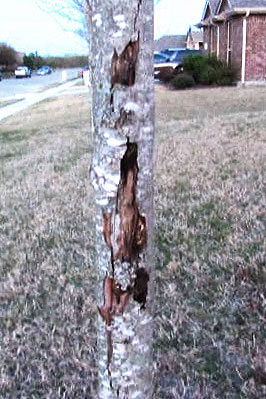
Sunscald of trunks…
• Trees are grown close together in nurseries. They shade one another.
• When we buy them, we plant them out in the open. For the first times in their lives they’re exposed to full sun.
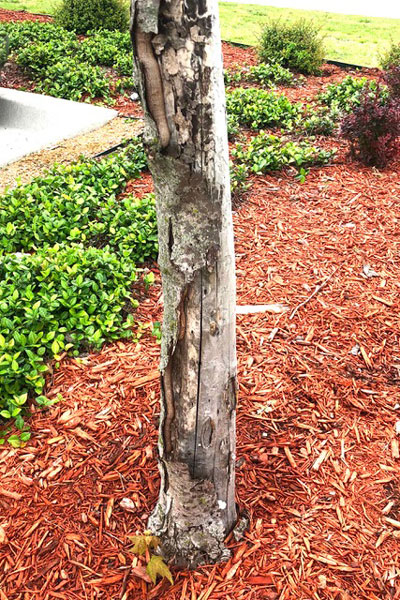
• Species with thin bark when young (for example, Shumard red oaks, Chinquapin oaks, live oaks, Chinese pistachios, red maples) don’t get much protection.
• Their bark on the west and southwest sides overheats. It then cracks and dries.
• Over time it splits and peels away from the trunk.
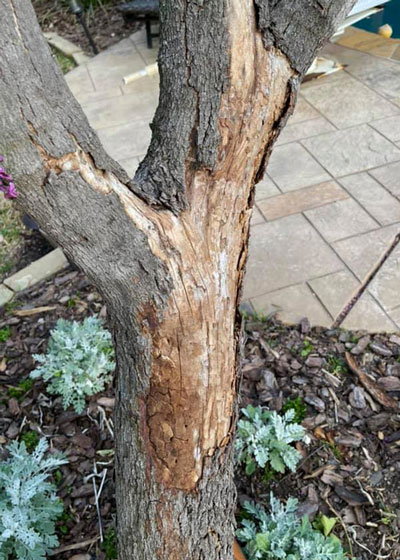
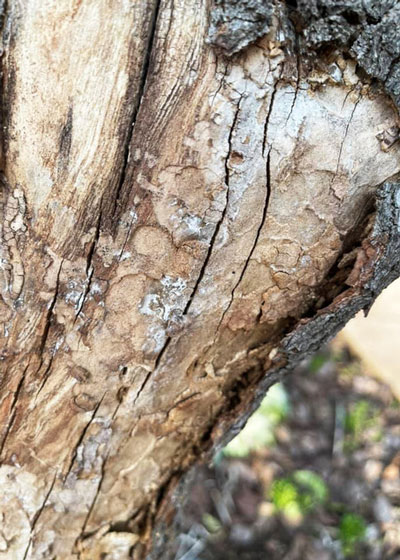
• Peeling bark carries with it the phloem (cylindrical tissue that carries manufactured sugars from leaves down to the roots, also the cambium layer).
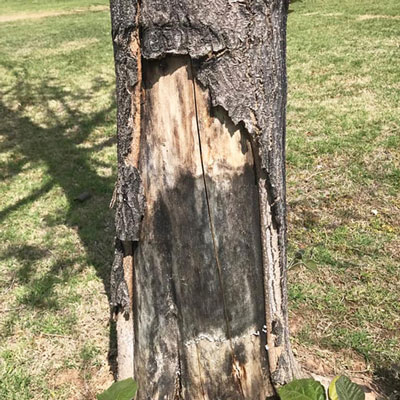
• Tree will try to heal across the wound, but if it encircles more than half of the trunk, or if internal wood of the trunk splits and dries, entire tree may be lost.
• If the tree recovers, limbs on affected side (west or southwest) may be impacted until tree can reestablish new conducting tissues.
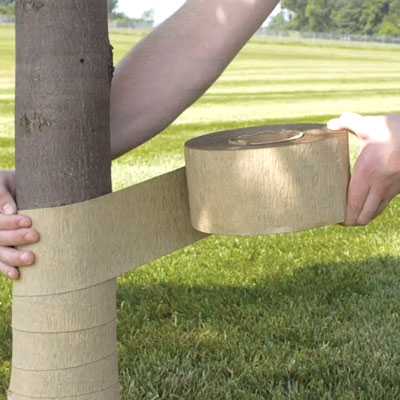
To prevent this damage…
• Apply paper tree wrap or plastic snap-on plant guards from ground up to lowest branches immediately after planting. As far as I am concerned, this is a non-negotiable practice.
• Leave wrap in place for 18-36 months (until tree develops enough shade to protect its own trunk).
• Tree wrap adheres to itself if wrapped tightly. Burlap and other fabrics are not good substitutes, but you can use plastic snap-on wraps.
• Paper tree wrap is available online and in some local nurseries and hardware stores. One source is A.M. Leonard in Piqua, Ohio. A 150-ft. roll is more than $20 plus $12 shipping. That seems like a lot until you figure it will wrap a dozen or more tree trunks. That brings the per-tree cost down to around $3. For a tree that cost $150-300, that’s a pretty good bargain.
Note: There is no point in wrapping a trunk that already is showing signs of cracking.
